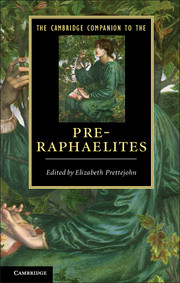4 - The religious and intellectual background
from PART ONE - PRE-RAPHAELITISM
Published online by Cambridge University Press: 28 September 2012
Summary
The list of Immortals is easily the movement's most intriguing document (see Appendix Two). Its fifty-seven names present an eclectic who's who which delineates the Pre-Raphaelite universe. It is as baffling as it is enlightening: a snapshot of hero worship taken in the early days of the Pre-Raphaelite Brotherhood. It has survived in an edited form and William Holman Hunt claimed that it originally ‘included further names … amongst them were many contemporaries now utterly forgotten’. Looking at the list today, most of the names still ring bells or can be googled. Hunt's editing has stood the test of time. But what does the list tell us about the beliefs of the young men who first drew it up, one imagines, as a kind of party game or bonding exercise to classify and clarify their divergent notions of human greatness?
It contains twenty-nine poets and writers and a total of seventeen visual artists, including an unspecified number of early Gothic architects. There are eight historical figures who represent adventure, initiative and varying degrees of revolutionary persuasion, and two scientists. Most surprising perhaps are the names of several biblical figures: Jesus Christ, the author of the Book of Job and the prophet Isaiah. It is important to grasp what the document reveals about the predilections of the Brotherhood's members. First of all, it demonstrates a firm belief in a kind of secular immortality embodied in human endeavour. Given their chosen group name, Pre-Raphaelite Brotherhood, it seems obvious to find an emphasis on medieval Italian authors and visual artists. However, the canonical masters Raphael, Michelangelo, Titian and Tintoretto are also mentioned. Large indeed is the number of British Romantic poets and writers. In contrast, the very few British artists who make the list may serve as an indication of the Pre-Raphaelites’ discontent with native artistic production.
- Type
- Chapter
- Information
- The Cambridge Companion to the Pre-Raphaelites , pp. 62 - 75Publisher: Cambridge University PressPrint publication year: 2012

